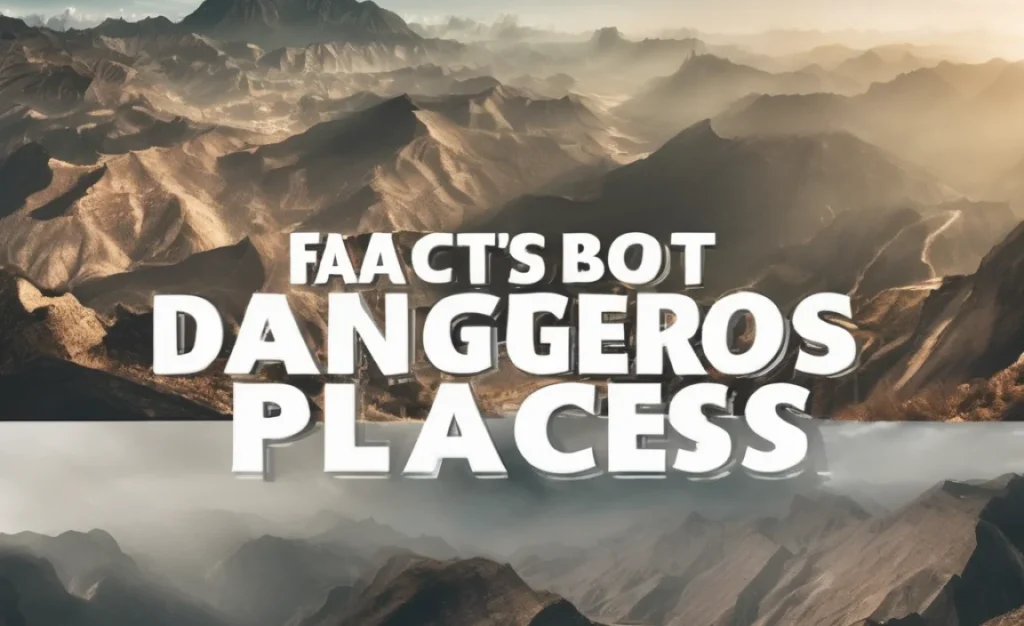Have you ever wondered where the world’s most dangerous places are? Some places on Earth have extreme conditions. Others face dangerous wildlife or natural disasters. Learning about these places can be exciting and a bit scary too. Let’s explore some interesting facts about the world’s most dangerous places. You might be surprised by what you discover!
Key Takeaways
- The climate can make places very dangerous.
- Wildlife in some areas poses real threats to people.
- Natural disasters shape many dangerous locales.
- Some facts about the world’s most dangerous places may surprise you.
- Knowing about these places helps us stay safe.
Facts About Dangerous Weather Conditions
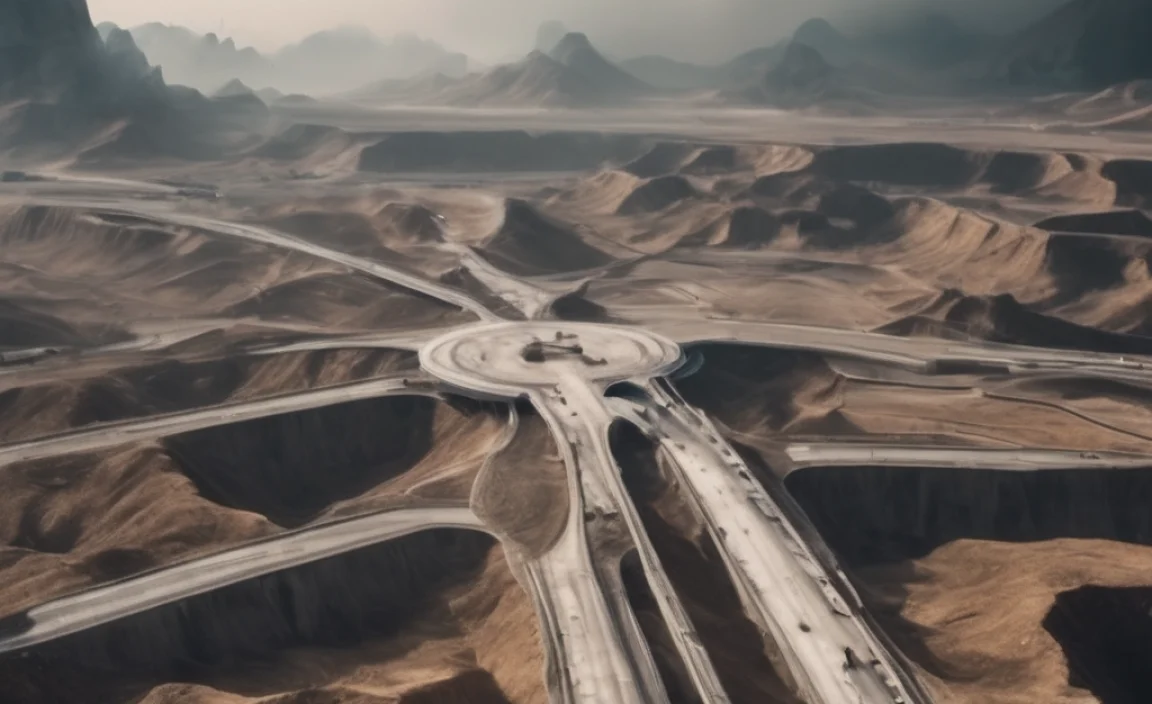
Weather can be one of the most dangerous forces on Earth. In some places, harsh weather conditions make life difficult or even risky. Hurricanes, tornadoes, and blizzards bring severe problems. For example, Tornado Alley in the United States sees many tornadoes each year. These storms can destroy homes and cause injury.
- Hurricanes bring strong winds and rain.
- Tornadoes can occur suddenly with little warning.
- Blizzards cause extreme cold and heavy snow.
- Floods result from heavy rain or melting snow.
- Lightning storms can be deadly and unpredictable.
- Extreme heat waves pose health risks.
- Freezing temperatures create slippery surfaces.
People living in these areas must prepare for dangerous weather. They need to know how to stay safe during storms. Emergency plans and supplies are important. Understanding the weather helps us predict and respond to these dangers.
Fun Fact: The fastest tornado was over 300 mph in 1999.
How Tornadoes Form
Have you ever seen a tornado in a movie? It looks like a giant spinning top. Tornadoes form from severe thunderstorms. Warm moist air rises and meets cold dry air. This causes a spinning effect. The spinning air reaches the ground, creating a tornado. It can be powerful and scary. People in tornado-prone areas often have storm shelters for safety.
The Impact of Hurricanes
Imagine a storm so big it fills the entire ocean. That’s what a hurricane looks like from space. Hurricanes bring strong winds and heavy rain. They can cause flooding and damage homes. Coastal areas are most at risk. People often have to evacuate to stay safe. Watching the weather helps people prepare for hurricanes.
Surviving Blizzards
Have you ever played in the snow? Imagine snow falling for hours and hours. That’s what happens during a blizzard. Blizzards bring freezing temperatures and strong winds. This makes it hard to see and travel. People need warm clothes and emergency kits to stay safe. It can be fun to watch the snow, but it’s important to stay safe too.
Dangerous Wildlife Around The World
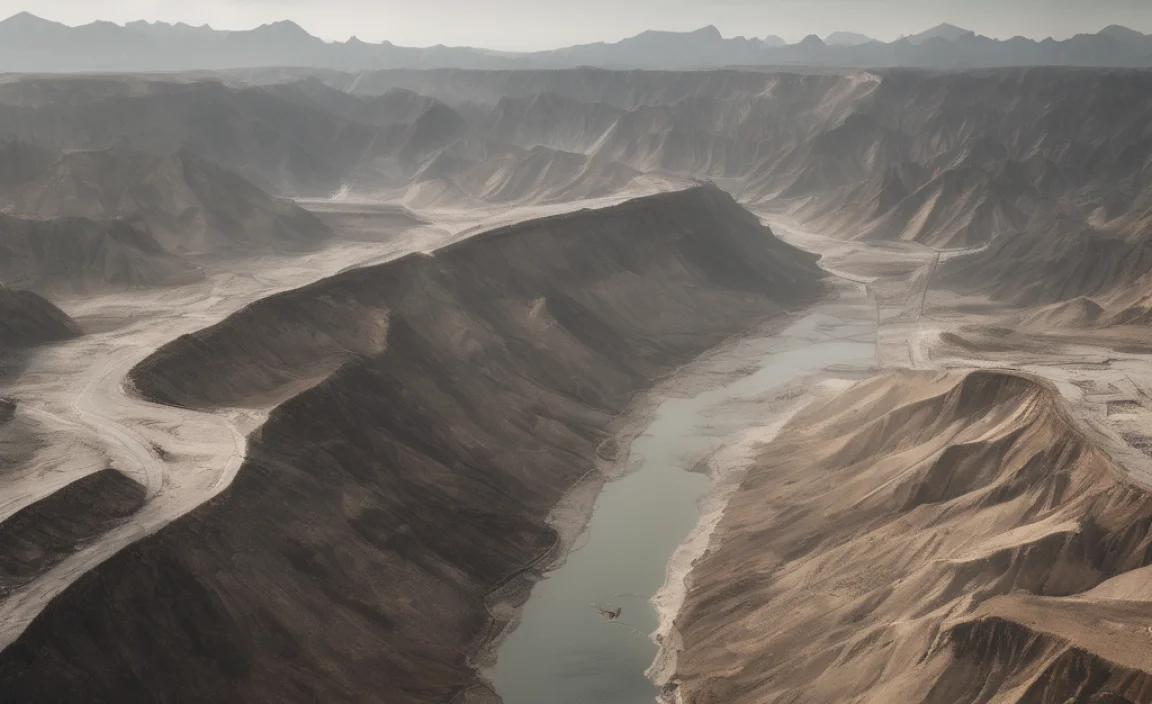
Some animals can be very dangerous. Certain places have wildlife that poses a threat to humans. In the Australian Outback, many deadly snakes live. In Africa, large predators like lions and crocodiles roam. The Amazon rainforest houses poisonous frogs and insects. Understanding these creatures helps protect us and them.
- Snakes like the Inland Taipan are extremely venomous.
- Lions are powerful predators in Africa.
- Crocodiles are stealthy and dangerous near water.
- Poisonous frogs have bright colors as warnings.
- Bees and wasps can sting in defense.
- Sharks inhabit oceans and can be dangerous.
- Jellyfish stings can be painful or deadly.
It’s important to respect wildlife and keep a safe distance. Learning about animals helps us safely enjoy nature. We can explore and appreciate these amazing creatures without getting too close.
Fun Fact: The Box Jellyfish has venom so powerful it can stop a heart.
The Mighty Lion
Have you ever heard a lion’s roar? Lions are known as the “king of the jungle.” They live in Africa and hunt in groups called prides. Lions are strong and fast. Their roar can be heard from miles away. People visit places like safari parks to see lions safely. It’s important to keep a distance and let lions live in peace.
Australia’s Venomous Snakes
What would you do if you saw a snake? Australia is home to some of the deadliest snakes. The Inland Taipan, also known as the “fierce snake,” is extremely venomous. However, these snakes are shy and prefer to avoid humans. Knowing where they live and how they behave helps people stay safe.
The Deadly Box Jellyfish
Did you know not all jellyfish are harmless? The Box Jellyfish is one of the most dangerous sea creatures. Found in the waters of the Indo-Pacific region, its tentacles have strong venom. Swimmers and divers must be cautious. Many beaches have signs to warn about jellyfish. Protective swimming nets are also common to keep people safe.
Natural Disaster Hotspots
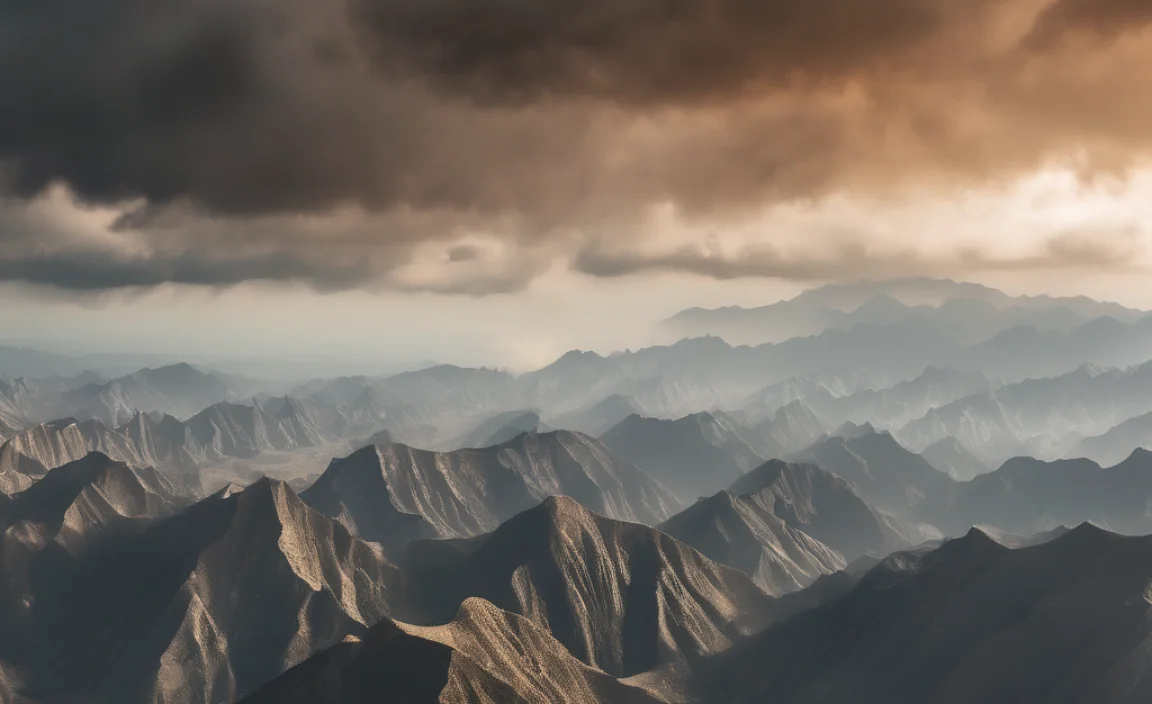
Natural disasters can occur without warning. Some places are more prone to these events. Earthquakes, tsunamis, and volcanic eruptions are examples. The Ring of Fire is a region around the Pacific Ocean. It has many earthquakes and volcanoes. Understanding these risks helps people prepare and react quickly.
- The Ring of Fire is prone to earthquakes.
- Tsunamis follow undersea earthquakes.
- Volcanoes can erupt with little warning.
- Earthquakes cause buildings to shake or collapse.
- Landslides happen after heavy rain or earthquakes.
- Preparing emergency plans saves lives.
- Early warning systems alert people to dangers.
Being aware of these dangers helps protect communities. Planning evacuation routes and having emergency kits are crucial. Technology plays a big role in detecting and warning about natural disasters. People can stay informed through alerts and updates.
Fun Fact: The 2011 Japan earthquake moved the Earth’s axis by 10 cm.
Earthquakes Around The Ring Of Fire
Have you ever felt the ground shake? The Ring of Fire is a path around the Pacific Ocean. Many earthquakes happen here. It’s due to shifting plates beneath the Earth’s surface. Some earthquakes are small, while others are huge and destructive. Building strong structures and having emergency plans help keep people safe during earthquakes.
Volcanic Eruptions
Have you seen a volcanic eruption? It’s both beautiful and dangerous. Volcanoes erupt when pressure builds up inside them. The lava flows can destroy everything in their path. Many people live near volcanoes because the soil is very fertile. Knowing the signs of an eruption can help people evacuate in time.
Understanding Tsunamis
What causes a giant wave to crash on shore? Tsunamis often follow undersea earthquakes. The sudden displacement of water creates large waves. These waves can travel hundreds of miles per hour. Coastal areas have early warning systems to alert residents. People are taught to move to higher ground if a tsunami warning is issued.
Human-Caused Dangers
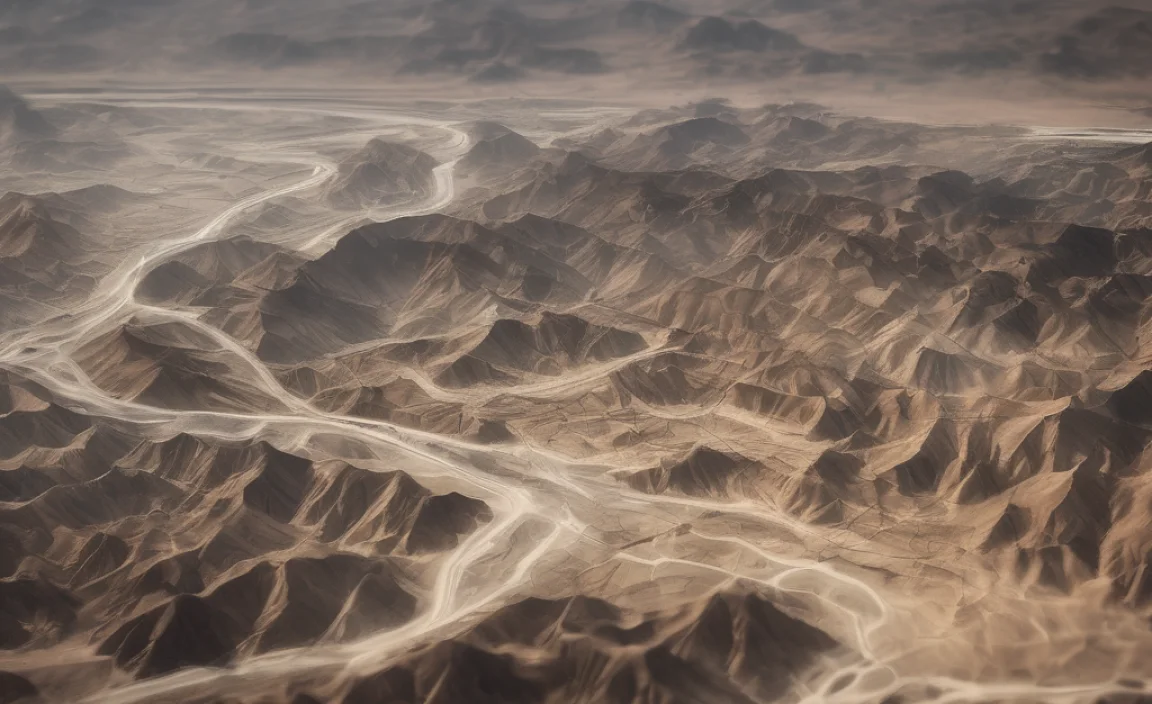
Not all dangers come from nature. Human actions can also create dangerous places. Pollution, wars, and accidents make some areas hazardous. For instance, Chernobyl in Ukraine remains radioactive due to a nuclear disaster. War zones are also extremely dangerous, with risks of explosions and injuries.
- Pollution harms air, water, and land.
- Nuclear disasters leave lasting impacts.
- War zones are unsafe due to conflicts.
- Accidents cause sudden danger and require quick response.
- Deforestation destroys habitats and increases risks.
- Oil spills damage marine life.
- Over-fishing depletes ocean resources.
Preventing human-caused dangers requires cooperation and care. Reducing pollution and protecting the environment are key steps. Peaceful resolutions to conflicts can make places safer. People can learn to make positive choices for the future.
Fun Fact: The Chernobyl disaster released 400 times more radiation than the Hiroshima bomb.
The Impact of Pollution
Have you seen litter on the streets? Pollution affects our world in many ways. Dirty air can cause health problems. Polluted water harms wildlife and people. Efforts to reduce pollution include recycling and using clean energy. Everyone can help by keeping their communities clean and reducing waste.
Nuclear Disasters
What happens when a nuclear power plant fails? Nuclear disasters release harmful radiation. Chernobyl is a well-known example. The 1986 accident spread radioactive material over a large area. It’s still unsafe for people to live there. Lessons learned from such disasters help improve safety and prevent future incidents.
War Zones and Conflict Areas
Why do some places become war zones? Wars happen when groups cannot resolve their differences peacefully. These areas become very dangerous. People might have to leave their homes to stay safe. Peace efforts aim to end conflicts and create safer environments for everyone.
Extreme Adventure Destinations
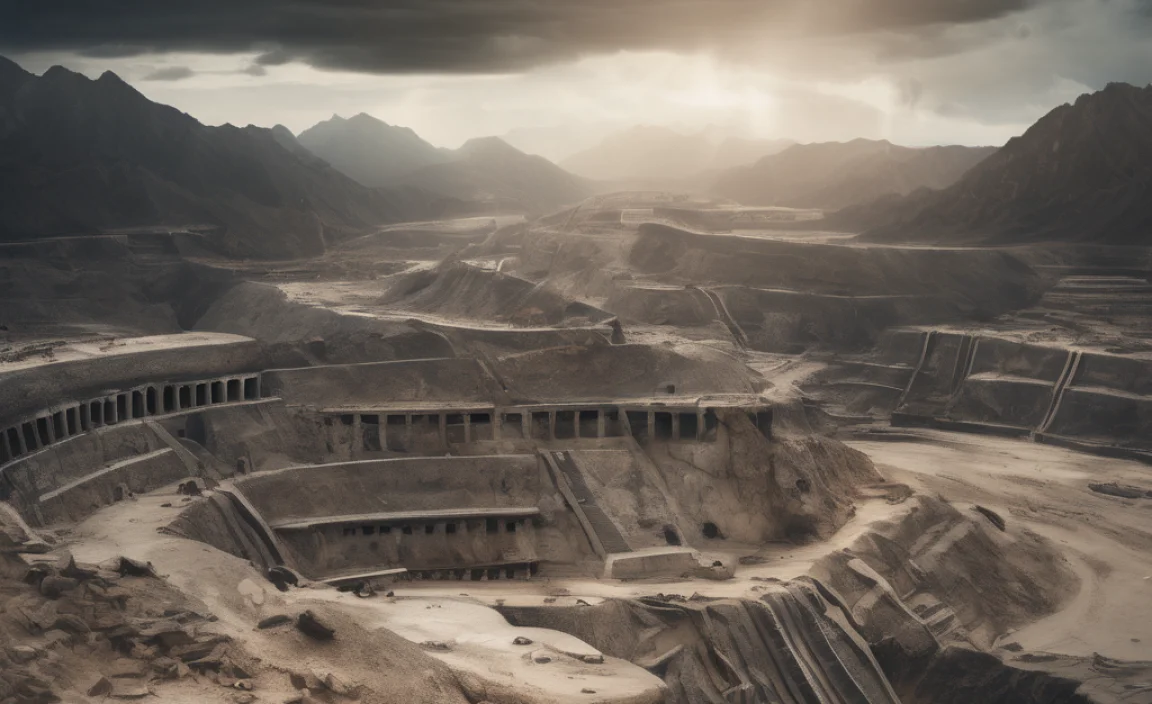
For some, danger is part of the adventure. Extreme destinations attract thrill-seekers looking for excitement. Mount Everest, the highest mountain, challenges climbers each year. The Atacama Desert in Chile is one of the driest places on Earth. These places offer unique experiences but come with risks.
- Mount Everest offers a challenging climb.
- The Atacama Desert has extreme dryness.
- Amazon jungle treks require preparation.
- Antarctica hosts extreme cold adventures.
- Deep-sea diving explores underwater mysteries.
- Desert safaris provide thrilling rides.
- Glacier hiking requires special gear.
Adventurers must prepare well and travel with experts. Safety gear and knowledge are essential. Respecting nature and understanding risks can make the experience rewarding and safe. Adventure tourism supports local communities and helps preserve these unique places.
Fun Fact: The summit of Mount Everest stands at 29,029 feet above sea level.
Climbing Mount Everest
Have you ever dreamed of standing on the world’s highest peak? Climbing Mount Everest takes courage and skill. Climbers face freezing temperatures and thin air. Reaching the summit is a huge achievement. Many prepare for years before attempting the climb. Each step is a challenge, but the view from the top is unforgettable.
Exploring The Atacama Desert
Have you ever felt the hot sun in a desert? The Atacama Desert is one of the driest places on Earth. It barely rains there. Adventurers visit to see its unique landscapes. They must carry plenty of water and wear sun protection. The desert’s clear skies are perfect for stargazing at night.
Trekking In The Amazon
Have you wondered what it’s like in a rainforest? The Amazon is the largest rainforest in the world. It’s home to many animals and plants. Trekking through the Amazon requires a guide. The dense jungle can be confusing. Insect repellent and sturdy boots are a must. The jungle offers an unforgettable experience for those prepared.
| Dangerous Place | Risk Factor | Type | Location |
|---|---|---|---|
| Tornado Alley | Tornadoes | Natural | United States |
| Australian Outback | Venomous Snakes | Wildlife | Australia |
| Ring of Fire | Earthquakes | Natural | Pacific Ocean |
| Chernobyl | Radiation | Human-Caused | Ukraine |
Conclusion
Exploring the facts about the world’s most dangerous places is fascinating. These places show us the power of nature and the impact of humans. Whether it’s extreme weather, wildlife, or human actions, knowing about these places helps us stay safe. Respecting and understanding these environments is key to overcoming their challenges.
FAQs
Question: What makes a place dangerous?
Answer: Places can be dangerous due to natural disasters, wildlife, or human actions. Natural disasters include events like earthquakes and storms. Dangerous wildlife may include venomous snakes or large predators. Human actions, like pollution or war, can also make areas unsafe.
Question: Why do people live in dangerous places?
Answer: People live in dangerous places for many reasons. Some areas have fertile land or valuable resources. Others are their ancestral homes. People adapt and create safety plans to manage risks. Community and culture can also be strong reasons to stay.
Question: Are all dangerous places natural?
Answer: No, not all dangerous places are natural. Some are created by people, like areas affected by pollution or war. Understanding the facts about the world’s most dangerous places includes looking at both natural and human-made risks.
Question: What is the Ring of Fire?
Answer: The Ring of Fire is a zone around the Pacific Ocean with frequent earthquakes and volcanic eruptions. It’s caused by plate movements beneath the Earth’s surface. The area is closely monitored to predict and respond to natural disasters.
Question: How do people stay safe in dangerous places?
Answer: People stay safe by preparing and understanding risks. They create emergency plans and keep supplies ready. Learning about the dangers and how to react is vital. Technology also helps by providing alerts and information, keeping communities informed.
Question: Why is Chernobyl considered dangerous?
Answer: Chernobyl is considered dangerous because of a nuclear disaster in 1986. The explosion released harmful radiation, making the area unsafe. It’s one of the many human-caused dangers among the facts about the world’s most dangerous places. The site remains largely uninhabitable.


